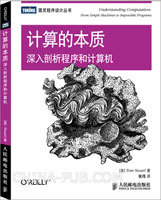分享 写 Block 的一些小结
Unknow user
·
June 11, 2015
·
Last by neenonw89 replied at September 23, 2025
·
1958 hits
块在实际中会有许多看了吃力的写法,例如像这样的:
class A
def initialize(val)
@val = val
end
end
b = ->(*a) { @val + a[0] + a[1] + a[2] + 123 } #
A.new(123).instance_exec(10000, 1000, 100, &b) #=> 11346
个人小结 :
- 块其实是作用域的游戏,把代码相对不变化的那部分写在
-> { }里面,其它的变化的都作为 caller - 参数本身是种 caller, 包括数字也是 caller(越大的数 call 的次数越高),负责把当前环境的变量带走至他方
- 块的意义在于让你的原有的代码有更强的迭代性或者演算性,使得你能最快的直达计算的本质问题
lambda 最简单的表示法 : 定义是 -> { } ,call 是 [ ]
ab = -> a {
-> b {
a * b
}
}
ab[5][6] #=> 30
一些例子:
lambda 和 &block 一同工作的例子:users 表 has_many 关联 posts 表,定义对指定关联的二级表进行操作的 hasmany_parse
hasmany_parse = -> obj, hasmany_table, &block {
obj.send(:each) do |_spus|
_products = _spus.send(hasmany_table)
_products.each do |_spu|
block.call(_spu) if block.is_a?(Proc) # 把_spu传出去,作为caller的一部分
end
end
}
hasmany_parse.(User.all, :posts) do |spua| # spua接收来自 `block.call(_spu)` caller发来的 _spus.posts.each{|..|}的单个post对象
spua.content = "#{Time.now}#{'你的修改'}" if spua.content =~ /符合某条件/
spua.save!
end
其它例子:lambda 演算
参考《计算的本质》的 第六章 : 主要写了如何用纯的 lambda 来实现 if,map, false/true 还有数字等,用 lambda 直达计算本质的问题
